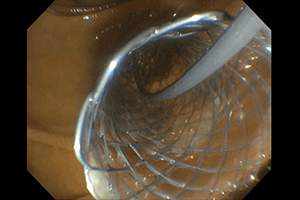 We understand that accessing the ductal system can be one of the most difficult aspects of your procedures. We know, too, that wire guide tip flexibility is one of the keys to achieving access. So, we’ve carefully considered what we’ve learned from serving the needs of interventional radiologists during the last 50 years and applied that expertise specifically for endoscopic retrograde cholangiopancreatography (ERCP). The result? The Acrobat® 2 Calibrated Tip Wire Guide—one of the most flexible-tipped wire guides on the market.¹ (See it in action in the clinical case video below.)
What’s more, the Fusion® OMNI™ Sphincterotome with DomeTip® and the D.A.S.H.™ Sphincterotome with DomeTip can provide you with procedural efficiency and consistent performance in a wide variety of clinical situations. Both the Fusion OMNI and the D.A.S.H. are used for cannulation of the ductal system and for sphincterotomy.
We understand that accessing the ductal system can be one of the most difficult aspects of your procedures. We know, too, that wire guide tip flexibility is one of the keys to achieving access. So, we’ve carefully considered what we’ve learned from serving the needs of interventional radiologists during the last 50 years and applied that expertise specifically for endoscopic retrograde cholangiopancreatography (ERCP). The result? The Acrobat® 2 Calibrated Tip Wire Guide—one of the most flexible-tipped wire guides on the market.¹ (See it in action in the clinical case video below.)
What’s more, the Fusion® OMNI™ Sphincterotome with DomeTip® and the D.A.S.H.™ Sphincterotome with DomeTip can provide you with procedural efficiency and consistent performance in a wide variety of clinical situations. Both the Fusion OMNI and the D.A.S.H. are used for cannulation of the ductal system and for sphincterotomy.
- Data on file at Cook Medical. Reference document number EA-RDE06032-004 Rev 1.
Connect with us!
Looking for training or your local contact? Let us help.
To be connected with your local Cook Medical representative, please provide the information below. Please see our Privacy Statement for data protection notices relating to our collection and use of your data.


